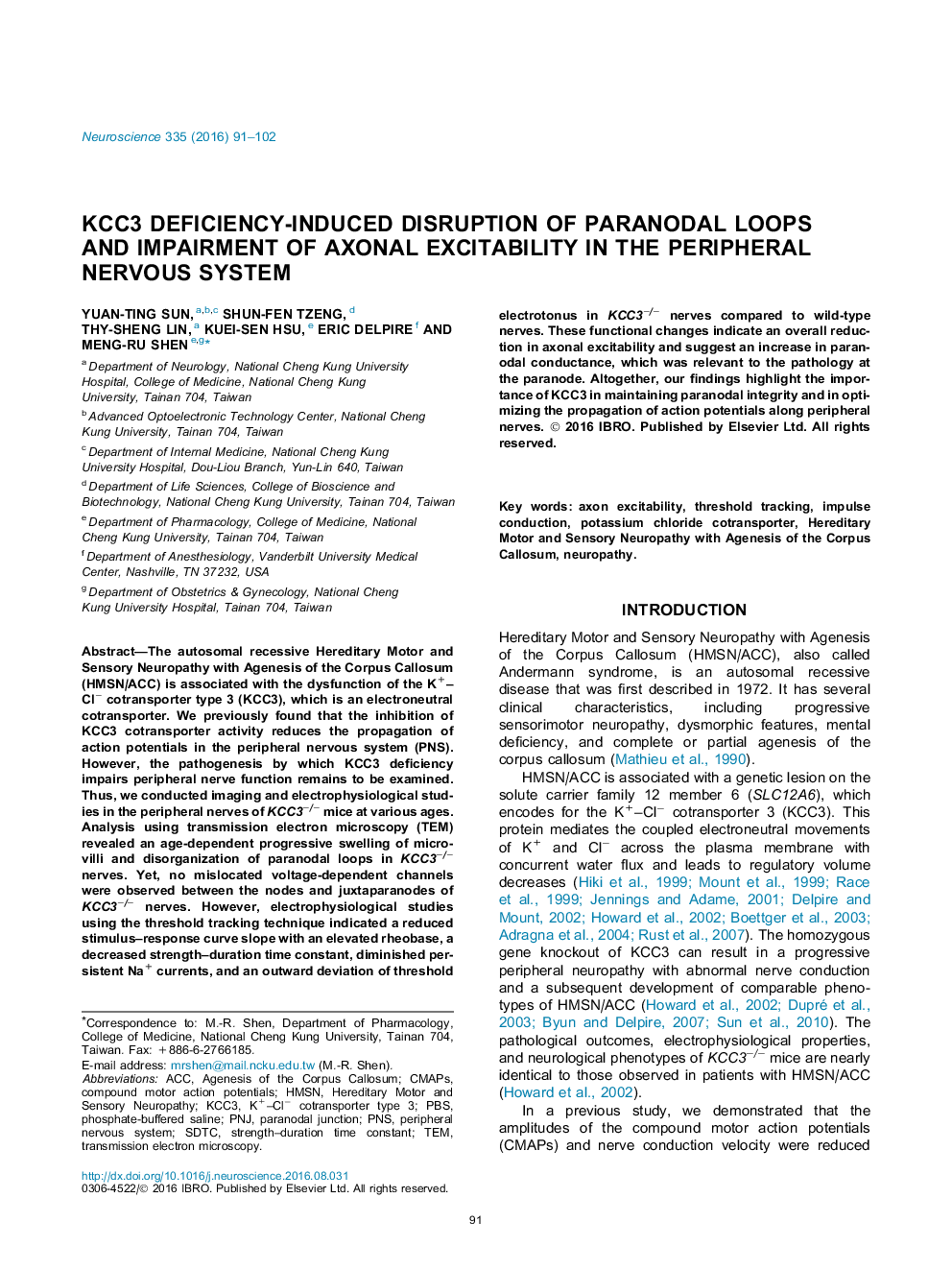| کد مقاله | کد نشریه | سال انتشار | مقاله انگلیسی | نسخه تمام متن |
|---|---|---|---|---|
| 4337269 | 1614741 | 2016 | 12 صفحه PDF | دانلود رایگان |

• Lack of KCC3 resulted in early disruptions of paranodal structures.
• Decrease of axonal excitability was detected in KCC3−/− nerves.
• Disorganization of paranodal loops appeared prior to the disruption of PNJ adhesion.
• No mislocated voltage-gated ion channels at node or paranode were found.
• The change of axonal excitability is relevant to the pathology at paranodal loops.
The autosomal recessive Hereditary Motor and Sensory Neuropathy with Agenesis of the Corpus Callosum (HMSN/ACC) is associated with the dysfunction of the K+–Cl− cotransporter type 3 (KCC3), which is an electroneutral cotransporter. We previously found that the inhibition of KCC3 cotransporter activity reduces the propagation of action potentials in the peripheral nervous system (PNS). However, the pathogenesis by which KCC3 deficiency impairs peripheral nerve function remains to be examined. Thus, we conducted imaging and electrophysiological studies in the peripheral nerves of KCC3−/− mice at various ages. Analysis using transmission electron microscopy (TEM) revealed an age-dependent progressive swelling of microvilli and disorganization of paranodal loops in KCC3−/− nerves. Yet, no mislocated voltage-dependent channels were observed between the nodes and juxtaparanodes of KCC3−/− nerves. However, electrophysiological studies using the threshold tracking technique indicated a reduced stimulus–response curve slope with an elevated rheobase, a decreased strength–duration time constant, diminished persistent Na+ currents, and an outward deviation of threshold electrotonus in KCC3−/− nerves compared to wild-type nerves. These functional changes indicate an overall reduction in axonal excitability and suggest an increase in paranodal conductance, which was relevant to the pathology at the paranode. Altogether, our findings highlight the importance of KCC3 in maintaining paranodal integrity and in optimizing the propagation of action potentials along peripheral nerves.
Journal: Neuroscience - Volume 335, 29 October 2016, Pages 91–102